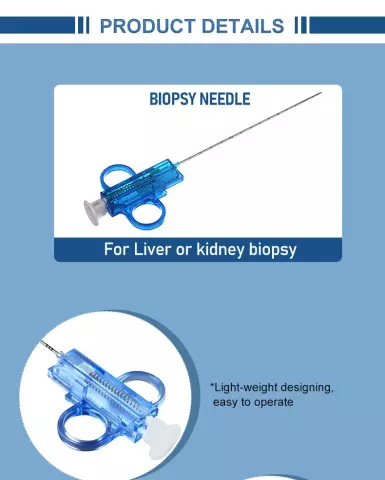- Author Rachel Wainwright [email protected].
- Public 2023-12-15 07:39.
- Last modified 2025-11-02 20:14.
Cervical caries
The content of the article:
- Causes of cervical caries and risk factors
- Forms of the disease
- Disease stages
- Symptoms
- Diagnostics
- Cervical caries treatment
- Possible complications and consequences
- Forecast
- Prevention of cervical caries
Cervical caries is a type of caries in which the destruction of hard tooth tissues is noted at the border of the tooth root and crown. With cervical caries, the labial, lingual, buccal surfaces of the anterior and lateral teeth can be affected. The disease most often occurs in childhood and in persons aged 30-60 and is one of the most dangerous types of caries, since the pathological process takes place in the most vulnerable area of the tooth, which contributes to its rapid destruction.

Cervical caries symptoms
The tooth consists of hard tissues (enamel, dentin, cement) and soft tissues - the neurovascular bundle, the so-called pulp, which nourishes hard tissues and is located inside the tooth.
Anatomically, the crown part (the visible part of the tooth), the neck (transitional area) and the root (the part of the tooth located in the jaw) are distinguished in the tooth. With the development of cervical caries, the pathological process can occur in the gingival area of the tooth or spread to the entire root area of the tooth. Due to the thinness of the enamel in this area, the disease is prone to rapid progression: the initial caries quickly turns into a deep stage.
Causes of cervical caries and risk factors
The causes of cervical caries include the same factors that cause the occurrence of caries in other locations, and in addition, the specific conditions that occur in the root region of the tooth. These include, first of all, the inaccessibility of this area for hygienic care. For this reason, soft dental plaque often accumulates in this area, and the formation of tartar is often noted. Cervical caries often develops against a background of gum disease (gingivitis). The formation and development of cervical caries is facilitated by the thickness of the enamel in this area, which is approximately 0.1 mm (while in the area of natural furrows on the chewing surface of the teeth, the thickness of the enamel is 0.7 mm, and in the area of the tubercles - 1.7 mm). A thin layer of enamel is easily damaged during brushing, especially when using hard brushes and abrasive toothpastes,which also increases the risk of infection by pathogenic bacteria with the subsequent development of caries.
Other risk factors for developing cervical caries include:
- some diseases that reduce the density of dental tissue (thyroid pathology, diabetes mellitus, rickets, scurvy, osteoporosis);
- genetic predisposition;
- the use of drugs that increase the porosity of tooth enamel;
- period of pregnancy;
- frequent consumption of acidic foods, easily fermentable carbohydrates;
- lack of vitamins in the body (especially vitamin B 1).

Lack of vitamin B1 is a predisposing factor for the development of cervical caries
In addition, the risk of developing cervical caries increases with age.
Forms of the disease
Depending on the number of affected teeth, cervical caries can be single, multiple and generalized.
Based on the state of the pulp, cervical caries can be simple and complicated (in the latter case, they often talk about the transition of deep caries to the stage of pulpitis).
Caries of the cervical region can be acute (more often observed in children or in patients with reduced immunity) or chronic (typical for adults).
Disease stages
In the clinical picture of cervical caries, the following stages are distinguished:
According to the depth of the lesion, cervical caries is distinguished:
- initial (chalky spot stage) - due to the anatomical features of this area, cervical caries at this stage is extremely rare;
- superficial (within the enamel);
- medium (destruction goes beyond the enamel, dentin is also affected);
- deep (almost the entire enamel-dentin layer is affected while maintaining the integrity of the pulp chamber, i.e., a narrow layer of dentin remains, protecting the pulp chamber from destruction).

Stages of cervical caries
Symptoms
The clinical picture of cervical caries varies depending on the stage of the disease. At the stage of the spot, the enamel in the area of the tooth neck loses its shine and becomes dull. A small white (chalky) or pigmented spot forms on the surface of the affected tooth, which can retain its shape and size for a long time. There is no pain or any other discomfort at this stage.
At the stage of superficial cervical caries, the surface of the spot becomes rough, which indicates the beginning of the destruction of the enamel. Pain sensations may be absent, or are observed with the use of sweet and / or cold drinks and foods, the pain in response to such stimuli is short-lived, disappears almost immediately after the cessation of the stimulus.
At the stage of medium caries, a carious cavity forms in the affected tooth. Outwardly, this may be imperceptible, however, food begins to get stuck in the affected area, causing discomfort after eating - usually it is this sign that becomes the first manifestation of cervical caries. Pain, as in the previous stage, may be absent, but it can take on a more pronounced character, also manifesting itself in response to chemical (sweet) and thermal (cold) stimuli. Often, pain accompanies brushing your teeth, especially if the patient rinses his mouth with cold water while brushing.

Multiple cervical caries
With deep cervical caries, food gets stuck in the cavity, and the pain can become very intense. It still appears in response to stimuli, but it does not pass as quickly as in the previous stages, lingering for some time after the stimulus stops acting. Often, pain occurs when cold air is inhaled.
Don't expect a visible cosmetic defect. The cavity can be relatively shallow - due to the thinness of the enamel in this area, even an insignificant depth of the lesion can be a sign of a deep stage of caries. In addition, the cavity may remain undetected due to its location on the lingual or lateral surfaces of the tooth. In acute caries, there is often a slight lesion of the enamel, under which, upon preparation, extensive destruction of dentin is found.
For cervical caries, circular spread is characteristic. The pathological process quickly passes to the middle part of the crown, can go deeper under the gum and cover the entire affected tooth in a circle.
Diagnostics
During routine medical examinations, cervical caries can be diagnosed at the stage of the spot. For this, it is enough to examine the oral cavity, probing, and assess the hygienic state of the oral cavity.
Additional diagnostic methods include tooth radiography, tooth radiovisiography, transillumination, electrodontodiagnostics, and thermal test. In addition, vital tooth staining can be performed, in which the patient is asked to rinse the mouth with a dye solution. At the same time, the coloring matter cannot penetrate into the enamel of healthy teeth, but penetrates into the demineralized areas of the enamel of the affected teeth. The previous staining returns to the teeth a few hours after the vital staining.

Cervical caries is diagnosed by examining the oral cavity
Differential diagnostics with fluorosis, enamel erosion, wedge-shaped defect is carried out. If cervical caries is found on several teeth, an endocrinologist's consultation is necessary.
Cervical caries treatment
The choice of treatment regimen for cervical caries depends on the stage of the disease.
At the stain stage, professional oral hygiene is carried out, as well as remineralizing therapy, which is aimed at normalizing the mineral composition of the enamel and strengthening it. The patient is given recommendations regarding oral hygiene, as with improper care, a relapse is almost inevitable.
When a carious cavity is formed, the treatment of cervical caries includes surgical treatment of the carious cavity and filling the tooth.
The cervical region of the tooth is highly sensitive, therefore, before starting the preparation, the tooth is usually anesthetized using conduction or infiltration anesthesia. With the help of a drill, the preparation of a carious cavity is carried out, while all tooth tissues that are affected by caries are removed. After that, the tooth is isolated from saliva, the cavity is first treated with an antiseptic, then with an adhesive for strong adhesion of the filling to the tooth tissues. In cases where the bottom of the cavity is close to the pulp, a therapeutic and insulating pad is placed on the bottom; at the stage of middle caries, only an insulating pad is sufficient.
Then the tooth is filled, with the help of a filling material, the crown is given its physiological shape, which is corrected by grinding and polishing. When a carious cavity is located on the vestibular surface of the tooth, treatment can be supplemented by the installation of a veneer - a ceramic plate that protects the tooth and provides a high cosmetic effect.
Possible complications and consequences
Launched cervical caries leads to the development of pulpitis, then periodontitis, and, as a result, tooth loss. In addition, caries can be complicated by gingivitis and periodontitis.
Forecast
With timely and correctly selected treatment, the prognosis is favorable.
Prevention of cervical caries
Prevention of cervical caries includes:
- thorough and regular oral care using individually selected products;
- regular (at least once every six months) preventive examinations at the dentist with professional oral hygiene;
- avoiding snacks between meals, especially without subsequent oral hygiene;
- balanced diet;
- rejection of bad habits.
YouTube video related to the article:

Anna Aksenova Medical journalist About the author
Education: 2004-2007 "First Kiev Medical College" specialty "Laboratory Diagnostics".
The information is generalized and provided for informational purposes only. At the first sign of illness, see your doctor. Self-medication is hazardous to health!






